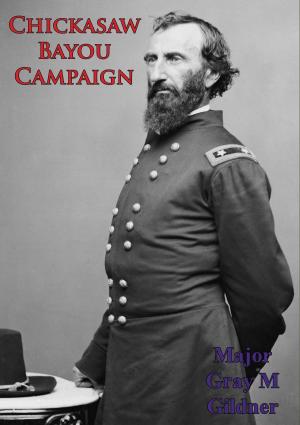Grant's Emergence As A Strategic Leader July, 1863, To March, 1864
Nonfiction, History, Modern, 19th Century, Americas, United States, Civil War Period (1850-1877), Military| Author: | LTC Robert L. Ball | ISBN: | 9781782896258 |
| Publisher: | Golden Springs Publishing | Publication: | August 15, 2014 |
| Imprint: | Golden Springs Publishing | Language: | English |
| Author: | LTC Robert L. Ball |
| ISBN: | 9781782896258 |
| Publisher: | Golden Springs Publishing |
| Publication: | August 15, 2014 |
| Imprint: | Golden Springs Publishing |
| Language: | English |
This paper looks at Ulysses S. Grant’s development as a strategic leader with emphasis on the time period July, 1863, to March, 1864. It has a dual focus. The first is an examination of Grant’s growth as a strategic thinker. The second is on the opening of opportunity for Grant to become a leader at the strategic level. The paper is written chronologically, with both subjects interwoven.
Bruce Catton, Lloyd Lewis, Carl Sandburg, and T. Harry Williams wrote the primary sources used in research and provided a good balance of “Grant-centric” and “Lincoln-centric” views. Whenever possible, The Official Records of the Rebellion were used. Care was taken to use source material written during the Civil War. Sherman’s war time views of Grant’s abilities carry more weight in this paper than what he wrote after the war. Similarly, Grant’s Memoirs were read with a jaundiced eye.
The findings of the research are laid out in the body of the paper. Grant’s career is reviewed in order to show a steady progression of ability. There is also a noticeable maturation in Grant’s strategic thinking that can be seen in the period highlighted. Finally, incidents are examined in which Grant proved himself to President Lincoln to be a perceptive, adept actor in the politics of high level command, earning Lincoln’s trust and confidence.
The conclusion of the paper is that just when the nation called for him, Grant had developed the essential skills for the job of general-in-chief.
This paper looks at Ulysses S. Grant’s development as a strategic leader with emphasis on the time period July, 1863, to March, 1864. It has a dual focus. The first is an examination of Grant’s growth as a strategic thinker. The second is on the opening of opportunity for Grant to become a leader at the strategic level. The paper is written chronologically, with both subjects interwoven.
Bruce Catton, Lloyd Lewis, Carl Sandburg, and T. Harry Williams wrote the primary sources used in research and provided a good balance of “Grant-centric” and “Lincoln-centric” views. Whenever possible, The Official Records of the Rebellion were used. Care was taken to use source material written during the Civil War. Sherman’s war time views of Grant’s abilities carry more weight in this paper than what he wrote after the war. Similarly, Grant’s Memoirs were read with a jaundiced eye.
The findings of the research are laid out in the body of the paper. Grant’s career is reviewed in order to show a steady progression of ability. There is also a noticeable maturation in Grant’s strategic thinking that can be seen in the period highlighted. Finally, incidents are examined in which Grant proved himself to President Lincoln to be a perceptive, adept actor in the politics of high level command, earning Lincoln’s trust and confidence.
The conclusion of the paper is that just when the nation called for him, Grant had developed the essential skills for the job of general-in-chief.

![Cover of the book The Civil War and Reconstruction [Second Edition] by LTC Robert L. Ball](https://www.kuoky.com/images/2016/august/300x300/9781787200272-387v_300x.jpg)










![Cover of the book Red Badge of Courage [Illustrated Edition] by LTC Robert L. Ball](https://www.kuoky.com/images/2013/february/300x300/9781908902757-OBfC_300x.jpg)

![Cover of the book Personal Memoirs Of P. H. Sheridan [Illustrated Edition] by LTC Robert L. Ball](https://www.kuoky.com/images/2014/august/300x300/9781782895411-77h1_300x.jpg)
![Cover of the book Advance And Retreat: Personal Experiences In The United States And Confederate States Armies [Illustrated Edition] by LTC Robert L. Ball](https://www.kuoky.com/images/2015/november/300x300/9781786251411-oejF_300x.jpg)